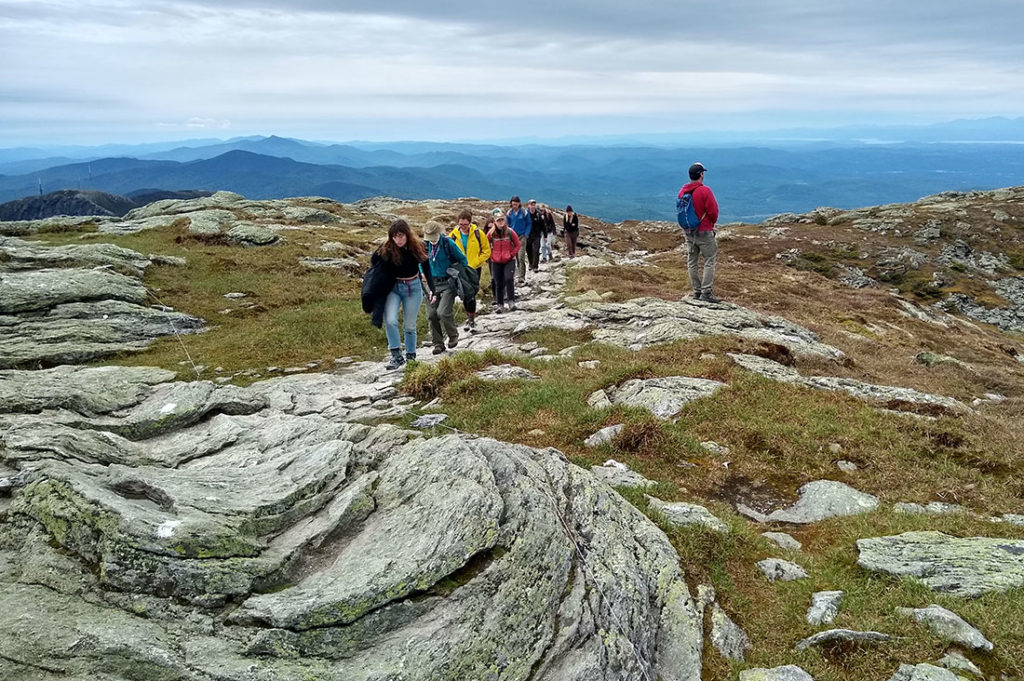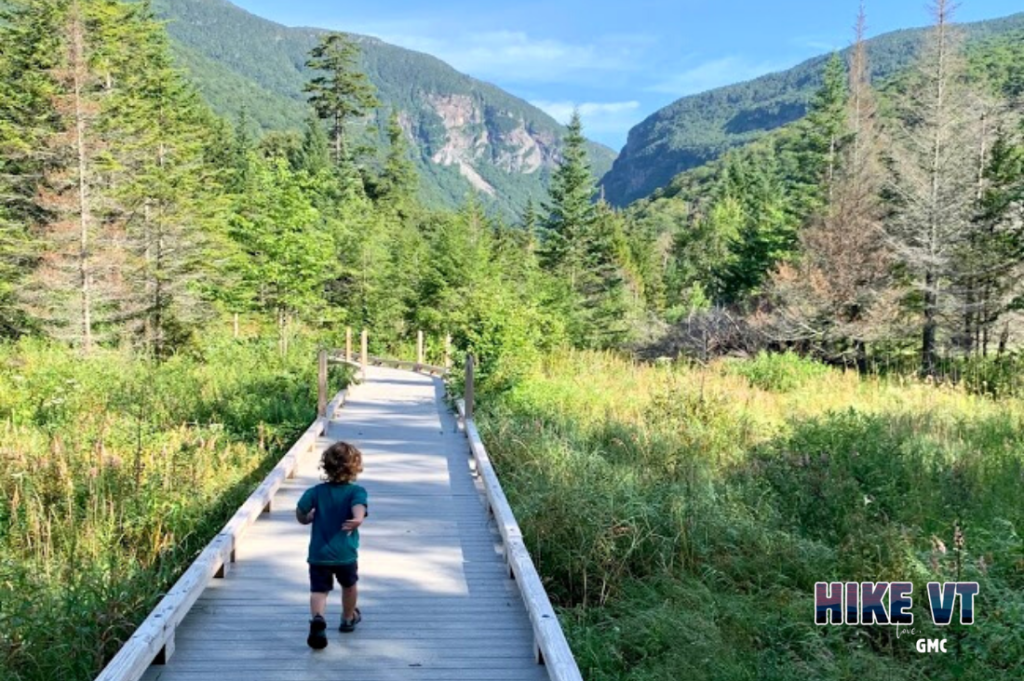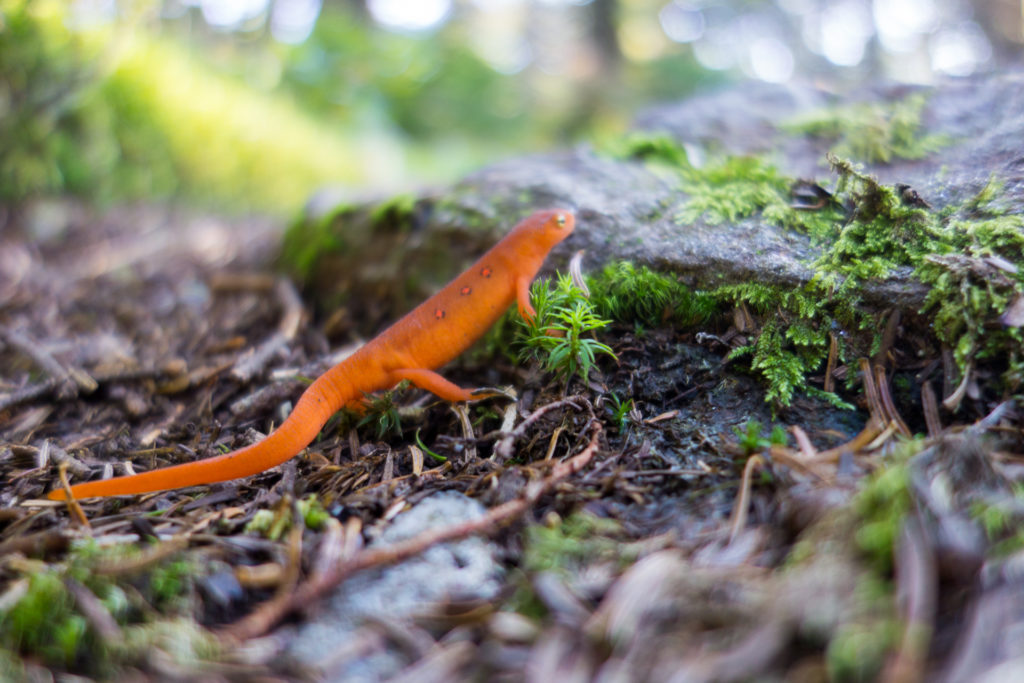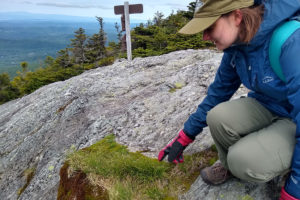GMC wants to help you make the most of your summer with Summer Hiking Bingo! These challenges are designed to help you get outside, learn new hiking skills, and connect with the hiking community. Download and print your own or stop in at GMC’s Visitor Center to pick up your bingo board. When you’re done, mail or email your completed bingo board (a photo is fine) back to us and receive a prize. More information and instructions for each bingo square are listed below.
** The deadline to return a Summer Hiking Bingo board has been extended to September 1 **
Download Summer Hiking Bingo Here
Safety First
Review your safety plan before a hike: Before every outdoor excursion, review how you are going to stay safe and what could go wrong. Consider: how long is the hike, and how long do you think it will take your group? What is the weather forecast, and what time does it get dark? what time will you turn around to ensure you get back before dark? Who — and how —will you call in case of emergency? What safety gear are you taking with you? Review the HikeSafe pledge and Ready for Rescue.
Use a map and compass to check your direction: Cell phones and GPSs are incredible tools, but not infallible. Using a map and compass is an excellent skill. You can buy a Long Trail Map from GMC, and review how it works here.
Pack the Ten Essentials for a Hike: Even for a short hike, you need to be prepared for the unexpected. The Ten Essentials can go a long way to keeping you and your hiking buddies safe. The actual items you bring are open to a little interpretation. What do you already have in your house that would fit each of these categories? Navigation (map and compass); hydration; nutrition; sun protection; insulation; illumination; first-aid supplies; fire starter; emergency shelter; tools and repair kit. Read more here.
Eat a good snack on a hike: Food is fuel…and also delicious! You need good snacks on any hike (See Essential #3 above, nutrition). Find a beautiful or comfortable spot along the way to take a break and refeul your body. Good hike snacks include sandwiches, granola bars, dried fruit, pretzels, trail mix, and so much more.
Find a blue trail blaze: Blazes are 2″ by 6″ rectangles that help mark the trail. The Long Trail uses white blazes, while its side trails use blue. Blazes are painted on trees or rocks at regular intervals.
Leave No Trace

Do the “rock walk”: The rock walk is a fun reminder to stay on the designated trail, especially in the fragile alpine zones on top of Camel’s Hump, Mount Mansfield, and Mt. Abraham. Stepping only on bare rock, and not on plants, grasses, or lichen, means you are protecting the fragile and endangered plants that grow there. If you leave the trail to take a break or eat a snack, find a place to sit and set your pack that’s rocks-only. Dogs should do the rock walk, too!
Pack out trash: You know you should remove your own wrappers, orange peels, and tissues, but take it up a step by packing out any litter you see on the trails! That includes organic litter like orange peels or sunflower seeds. See who in your hiking group can find the most trash on the trail. Pack a ziploc bag and consider gloves to avoid contamination.
Find the white string: GMC caretakers and volunteers tie up white string to mark the trail in open environments, like the bald summit of Camel’s Hump, where the forest doesn’t provide a natural trail border. Staying within the stringed zone helps follow the principle Travel and Camp on Durable Surfaces and concentrates impact to one designated trail. It also protects the alpine vegetation.
Hike directly through a mud puddle: Did you pack your extra socks? Vermont trails are known for being pretty muddy, thanks to our soil composition, steep, old trails, and consistent rain. You can protect the trails by hiking directly thought the mud, not around it. Hiking around the mud widens the trail, tramples vegetation, and makes the mud puddle worse! Consider wearing waterproof shoes and gaiters, and use trekking poles or a walking stick to gauge how deep the mud is before you start. If it’s too deep to walk through, consider turning around and finding another place to hike. More about Mud Season, though mud season conditions can be present any time.
Exploring

Vermont has hundreds of trails to offer! Here are some ideas to get you started.
Your favorite hike: You choose this one! Maybe it’s the one closest to your house or one you have special memories doing. Bonus points if you bring a friend who’s never been there.
A hike you’ve never done: Is this the year you make it to the summit of Camel’s Hump? Or, if you’ve hiked Burrows Trail a million times, try the Long Trail South for a challenging way to the summit. GMC has hundreds of day hike recommendations, so start browsing and find one that looks good to you! You can also use TrailFinder.
Hike, walk, or bike on an accessible trail: Outdoor recreation is for everybody! Explore some accessible ways to get outside, like the Thundering Falls boardwalk, Island Line Trail or Lamoille Valley Rail Trail, and more.
Hike to a river or swim spot: Always check water levels and only swim when it is safe. Consider the River Trail at Green Mountain Audubon Center; spots around Honey Hollow in Duxbury, or Bingham Falls via the Mill trail in Stowe.
Go camping: Spend the night outside — and yes, your backyard counts! Backyard camping is a great way to test out your gear, practice setting up a tent, and seeing how younger kids do with a new sleep routine. When you’re ready to level it up, try a drive-in state park campground or get a taste of the Long Trail experience with a night in an LT lean-to or shelter.
Hike to a firetower or observation deck: For the best views around! Here are several currently open fire towers:
- Stratton Mountain
- Ludlow Mountain (Okemo)
- Mount Elmore
- Belvidere Mountain
- Mount Ascutney, Windsor
- Gile Mountain, Norwich
- Spruce Mountain, Plainfield
- Burke Mountain and Bald Mountain in the Northeast Kingdom
- Observation platform on Bolton Mountain
- Observation platform on Mount Ellen
- Ethan Allen Tower in Ethan Allen Park, Burlington
Visit a state park or town forest: We love the Long Trail and its 88 side trails, but there are so may places to explore in Vermont. Many town have amazing town forest trails, like Preston Pond in Bolton or Hinesburg Town Forest. For state parks outside the LT System, try Little River State Park in Waterbury, Mt. Philo in Charlotte, or Emerald Lake State Park in Rutland.
Hiking Community
Say hi to a GMC caretaker: Caretakers are professional staff of the Green Mountain Club. They are stationed at busy summits and ponds and their job is to protect the fragile environments around them. You’ll find them stewarding the alpine zones on Camel’s Hump, Mount Mansfield, and Mt. Abraham; roving through the Killington area, and at Sterling Pond, Little Rock Pond, and Stratton Pond. Caretakers can answer questions about the trails, the flora and fauna around you, and Vermont’s natural history. Say hello and ask them their favorite part of their job!
Meet a thru-hiker: Thru-hikers, also called End-to-Enders, are people who hike the entire Long Trail, or any long-distance hiking trail. About 300 people hike the Long Trail each year. Can you cross paths with one while you are out hiking on the Long Trail? They might be identified by a huge backpack, muddy shoes, and a tired yet accomplished look. Learn more about hiking the Long Trail End to End.
Carpool with friends to a hike: Parking is limited at almost all trailheads, and parking lots fill up, especially on sunny summer days. You can follow good stewardship principles and connect with fellow hiking buddies by arranging a carpool to a hike! Please make sure to always park in designated spots only, and not on the side of a road. If parking lots are full, plan an alternate hike nearby. This is especially important to respect the neighbors who live on roads to popular trailheads, like Camel’s Hump Road in Huntington. It’s also critical to ensure emergency vehicles have room to access a trailhead if something goes wrong.
Share your hiking pics with GMC! Did you snap some evidence of your great hike? We’d love to see your photos! Send your photos to us via email at [email protected] or tag us on Instagram or Facebook, @greenmountainclub. Use the Hashtag #SummerHikingBingo! We will repost our favorite photos.
Visit GMC’s new Rothberg-Birdwhistell Visitor Center in Waterbury Center: Stop in to learn more about what the Green Mountain Club does and how you can get outside. We offer weekly guided hikes on the Short Trail, an easy interpretive trail on our campus, and Hiking 101 workshops. Open Monday – Saturday, 10 a.m. – 4 p.m. Map it.
The World Around You
 Spot a red eft (newt): These little guys are frequently spotted on trail, thanks to their bright orange color. “Eft” refers to the juvenile stage of an eastern newt, which turns green, brown, and yellow as it matures. Red efts live on land for two to three years before migrating to a pond as they reach adult stage.
Spot a red eft (newt): These little guys are frequently spotted on trail, thanks to their bright orange color. “Eft” refers to the juvenile stage of an eastern newt, which turns green, brown, and yellow as it matures. Red efts live on land for two to three years before migrating to a pond as they reach adult stage.

Identify an alpine plant like Bigelow’s Sedge: Vermont is very lucky to have three alpine zones, where biologically diverse and rare plant species grow. These ecological zones are characterized by harsh winds and colder temperatures. The plants that grow here are vulnerable to impacts from human and pet footsteps — that’s why doing the rock walk and staying on trail is so important. Ask a caretaker to point out some alpine plants to you. Bigelow’s Sedge is a common one. It looks a lot like ordinary grass at first glance, but the blades have sharp edges. More about Vermont’s Alpine Zones and Alpine Plant Identification.
Write a hiking haiku: Art can help us connect to the nature around us. You can draw, paint, write a story, or write a poem about your hike. A haiku is a short poem, often nature related. It has three lines and the syllables in each line follow the pattern 5-7-5. Explore more poems from the trai (page 10)l.



















Leave a Reply